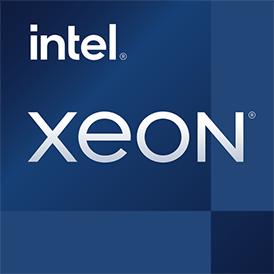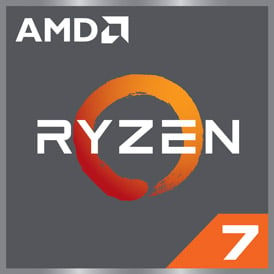 Geekbench 3, 64bit (Multi-Core)
Geekbench 3, 64bit (Multi-Core)
|
|
Intel Xeon E5-2650L v4
14C 28T @ 1.7 GHz
|
37110
|
|
|
AMD Ryzen 7 1800X
8C 16T @ 3.6 GHz
|
30932
|
 Estimated results for PassMark CPU Mark
Estimated results for PassMark CPU Mark
|
|
AMD Ryzen 7 1800X
8C 16T @ 3.6 GHz
|
16325
|
|
|
Intel Xeon E5-2650L v4
14C 28T @ 1.7 GHz
|
12657
|
 Geekbench 5, 64bit (Multi-Core)
Geekbench 5, 64bit (Multi-Core)
|
|
Intel Xeon E5-2650L v4
14C 28T @ 1.7 GHz
|
7369
|
|
|
AMD Ryzen 7 1800X
8C 16T @ 3.6 GHz
|
6344
|
 Geekbench 6 (Multi-Core)
Geekbench 6 (Multi-Core)
|
|
AMD Ryzen 7 1800X
8C 16T @ 3.6 GHz
|
5932
|
|
|
Intel Xeon E5-2650L v4
14C 28T @ 1.7 GHz
|
5728
|
 Geekbench 3, 64bit (Single-Core)
Geekbench 3, 64bit (Single-Core)
|
|
AMD Ryzen 7 1800X
8C 16T @ 3.6 GHz
|
4356
|
|
|
Intel Xeon E5-2650L v4
14C 28T @ 1.7 GHz
|
2941
|
 Cinebench R15 (Multi-Core)
Cinebench R15 (Multi-Core)
|
|
AMD Ryzen 7 1800X
8C 16T @ 3.6 GHz
|
1617
|
|
|
Intel Xeon E5-2650L v4
14C 28T @ 1.7 GHz
|
1480
|
 Geekbench 6 (Single-Core)
Geekbench 6 (Single-Core)
|
|
AMD Ryzen 7 1800X
8C 16T @ 3.6 GHz
|
1167
|
|
|
Intel Xeon E5-2650L v4
14C 28T @ 1.7 GHz
|
867
|
 Geekbench 5, 64bit (Single-Core)
Geekbench 5, 64bit (Single-Core)
|
|
AMD Ryzen 7 1800X
8C 16T @ 3.6 GHz
|
932
|
|
|
Intel Xeon E5-2650L v4
14C 28T @ 1.7 GHz
|
708
|
 Cinebench R15 (Single-Core)
Cinebench R15 (Single-Core)
|
|
AMD Ryzen 7 1800X
8C 16T @ 3.6 GHz
|
163
|
|
|
Intel Xeon E5-2650L v4
14C 28T @ 1.7 GHz
|
104
|
 Cinebench R11.5, 64bit (Multi-Core)
Cinebench R11.5, 64bit (Multi-Core)
|
|
Intel Xeon E5-2650L v4
14C 28T @ 1.7 GHz
|
18.2
|
|
|
AMD Ryzen 7 1800X
8C 16T @ 3.6 GHz
|
18.0
|
 Cinebench R11.5, 64bit (Single-Core)
Cinebench R11.5, 64bit (Single-Core)
|
|
AMD Ryzen 7 1800X
8C 16T @ 3.6 GHz
|
2.0
|
|
|
Intel Xeon E5-2650L v4
14C 28T @ 1.7 GHz
|
1.3
|

